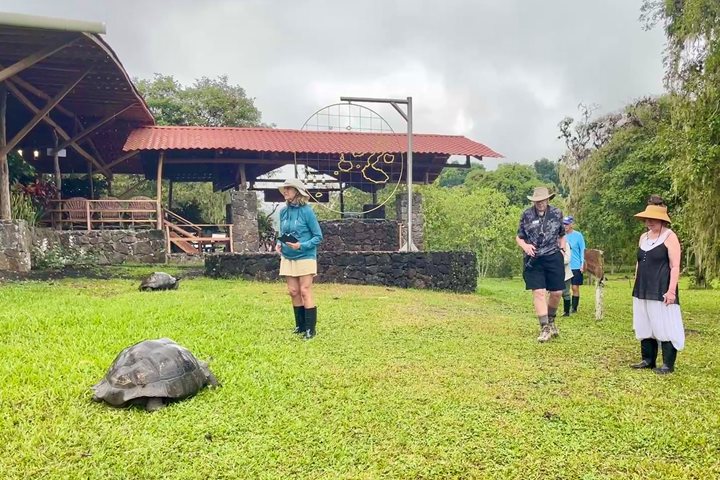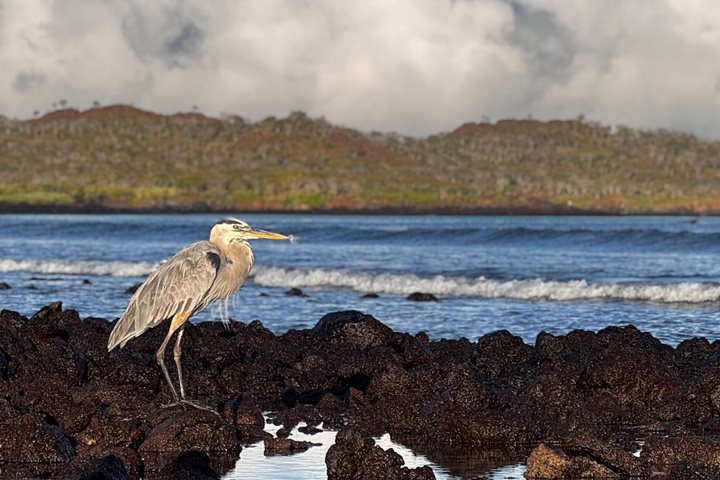Today we visited the largest island of the Galapagos Archipelago covering 58% of the Galapagos Islands total land mass, Isabela Island. In the morning we visited Urbina Bay where we enjoyed walking along male yellow iguanas and contemplating 6km upwelling terrain that occurred in 1954 when 5m of sea floor got uplifted. After a warm walk we got cool down with an open water swim from Urbina Bay beach to the ship. The rest of the day we had multiple activity options such as kayaking with sea lions, paddle boarding while we spotted sharks and snorkeling with fast swimming penguins and cormorants, yes you read that right, Galapagos swimming flightless cormorants. During a zodiac ride, Global Explorers collected plankton that we observed in the microscope and while aboard worked creating a new species of Galapagos fish using their creativity and all the knowledge they have acquired these days about fish. In the afternoon we hiked up to Tagus Cove to watch the sunset on top of Darwin Lake.
5/29/2025
Read
National Geographic Gemini
Genovesa Island
Genovesa is considered one of the Galapagos crown jewels, and today it was showing off all of its splendor. Immediately after breakfast we put on our sturdy shoes and set out to explore Prince Philip’s Steps. This area is known for opportunities to observe not only large colonies of nesting Nazca and red-footed boobies, but maybe, just maybe, the short-eared owl which exhibits diurnal behavior on this island. After this walk we got ready for a dip in the Pacific Ocean and snorkeling along the inner coast of this caldera. The afternoon was equally amazing as we disembarked to explore Darwin Bay, along a short and easy trail that was packed with wildlife. Here we observed not only nesting frigatebirds, red-footed boobies, and Nazca boobies, but also a few yellow-crowned night herons. It was another incredible afternoon in the Galapagos Islands.







